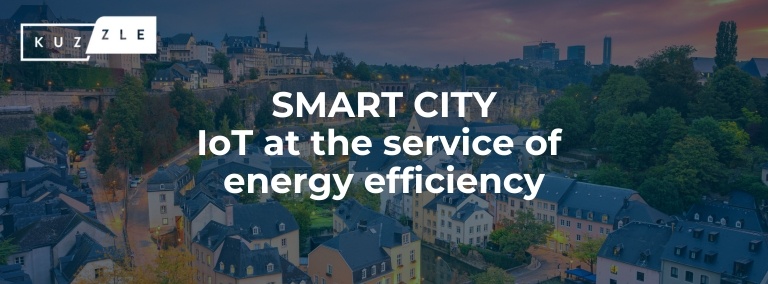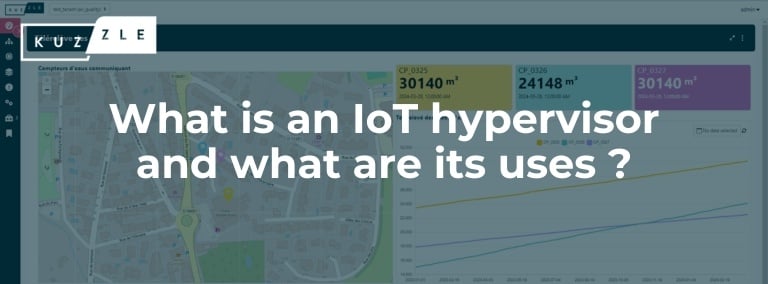Digital twins are revolutionizing the healthcare sector, offering unprecedented perspectives for the management of medical care and infrastructures. By virtually reproducing patients, equipment and healthcare buildings, this IoT-based technology enables precise simulation and predictive analysis, transforming medical practices.
From personalized treatment to preventive equipment maintenance, digital twins optimize the efficiency, safety and quality of care, while reducing costs.
In summary :
- What is a digital twin in healthcare?
- Examples of the use of digital twins in healthcare
- How are digital twins revolutionizing healthcare?
- Digital twins for personalized healthcare treatment
- How does the digital twin advance research?
- Better management of healthcare buildings thanks to digital twins
What is a digital twin in healthcare?
In the healthcare sector, a digital twin is a virtual replica of an object, process or system that can be used for real-time simulation and analysis thanks to the IoT. In the medical field, this could mean the creation of digital models of patients, organs, or even hospital facilities, enabling healthcare professionals to test and optimize treatments and procedures without risk to patients.
These models rely on efficient management via IoT platforms, such as the one offered by Kuzzle, which continuously integrate and secure data. These technologies thus enable greater precision in care and proactive management of medical equipment.
Digital twins are becoming an indispensable part of healthcare innovation, offering unlimited prospects for improving care and managing healthcare systems.
Examples of the use of digital twins in healthcare
Digital twins are transforming the healthcare sector by providing accurate, real-time simulations that improve patient care and healthcare building management. Their application is diverse, ranging from individual patient management to medical equipment maintenance:
- Personalized patient management: Digital twins can simulate different treatment options for a patient, optimizing treatments based on the simulations.
- Surgical planning: Used to preview surgical interventions, digital twins help reduce risks and plan safer, more efficient procedures.
- Predictive maintenance: In healthcare infrastructures, digital twins predict the failure of healthcare equipment, enabling proactive maintenance and reducing unplanned downtime for the safety of patients and medical staff.
- Asset and people geolocation: Digital twins facilitate real-time geolocation of healthcare equipment, medical staff and patients, improving internal logistics and safety within healthcare facilities.
- Healthcare building management: Digital twins offer a complete, dynamic view of healthcare infrastructures, enabling optimal management of space, energy and resources. They facilitate monitoring, energy efficiency management and optimization of patient and staff flows, contributing to a safer, more efficient healthcare environment.
The adoption of digital twins in healthcare offers greater personalization of care and more efficient management of medical resources. This technology, supported by IoT platforms, is essential for improving healthcare practices. They also enable better resource allocation and faster response in critical situations thanks to the precise location of assets and personnel.
How are digital twins revolutionizing healthcare?
Digital twins are revolutionizing the healthcare sector by offering personalized, predictive solutions for managing patients and medical infrastructures. These virtual models improve the accuracy of diagnoses, treatments and the management of healthcare equipment:
- Diagnostic accuracy: Simulation of patients' medical conditions for more accurate and rapid diagnosis, reducing medical errors.
- Personalized treatment: Tailor patient treatments thanks to accurate predictions of responses to treatment.
- Enhanced medical training: Use digital twins to train healthcare professionals on complex cases without risk to patients.
- Cost reduction: Optimization of medical treatments and procedures to reduce costs through effective planning and simulation.
- Optimized management of equipment and facilities: Maintenance forecasting and resource management to minimize downtime and improve operational efficiency.
The use of digital twins in healthcare is bringing improvements in the quality and efficiency of care. By providing tools to simulate and predict the outcome of treatments and operations, these technologies enable better management of medical resources and an enhanced patient experience. Digital twins are thus becoming a major asset in the advancement of healthcare.
Digital twins for personalized healthcare treatment
One of the most significant benefits of digital twins in healthcare is their ability to personalize medical treatment. Thanks to these virtual models, healthcare professionals can anticipate a patient's reaction to a treatment or medication before physically administering them. This is particularly valuable as treatment personalization can radically improve patient outcomes.
In addition, digital twins enable detailed simulations based on a patient's unique medical data, including genetic, environmental and lifestyle factors, offering an in-depth understanding of their specific condition and needs. For example, in cardiology, a digital twin can simulate how a specific heart will respond to a pacemaker or other interventions, enabling a safer and more effective approach
In addition, digital twins enable detailed simulations based on a patient's unique medical data, including genetic, environmental and lifestyle factors, providing an in-depth understanding of their specific condition and needs. For example, in cardiology, a digital twin can simulate how a specific heart will respond to a pacemaker or other interventions, enabling a safer and more efficient approach.
By using IoT platforms like Kuzzle's to manage these digital twins, healthcare professionals can integrate and analyze data in real time to adjust treatments as new information becomes available. This leads to more effective treatments, reduced healthcare costs and maximized chances of treatment success.
How does the digital twin advance research?
Digital twins are driving medical research forward, particularly in the discovery of new therapeutic molecules. By creating precise digital models of specific diseases or cellular reactions, researchers can simulate the effect of different molecules on a disease state, significantly accelerating the drug development process. This approach not only enables potential treatments to be targeted more precisely, but also reduces the need for costly and time-consuming tests.
In addition, digital twins in healthcare can identify combinations of existing drugs that could be used to treat other diseases, paving the way for new therapeutic applications without the delays associated with new drug development. Thanks to the power of IoT platforms, which collect and analyze huge volumes of data in real time, researchers can iterate faster, adjusting virtual parameters to explore potential treatments.
-Mar-25-2025-02-30-33-8826-PM.png?width=920&height=460&name=Design%20sans%20titre%20(1)-Mar-25-2025-02-30-33-8826-PM.png)
Better management of healthcare buildings thanks to digital twins
Digital twins are transforming the management of healthcare infrastructures by enabling precise, real-time monitoring and optimization. These technologies deliver significant benefits by improving the efficiency and safety of healthcare environments.
- Space and resource optimization: Simulation of room and equipment layouts to maximize space utilization and minimize staff travel time.
- Energy management: Monitoring and analysis of energy consumption to identify opportunities for cost reduction and optimization of energy use.
- Preventive maintenance: Predict equipment failures and schedule maintenance before problems arise, reducing unplanned downtime.
- Environmental monitoring: Continuous monitoring of environmental conditions, such as air quality and temperature, to ensure a healthy environment for patients and staff.
- Safety and emergency management: Simulation of emergency scenarios, such as fires or floods, to improve emergency response, personal safety and minimize potential damage.
Adopting digital twins for healthcare building management improves operational efficiency and ensures an optimal care environment for patients. By providing accurate, up-to-date data, digital twins play a key role in modernizing and securing medical infrastructures.
To find out more about digital twins for buildings, read our article!
Key facts
Implementing a digital twin project in a healthcare building is becoming essential for any structure wishing to improve the efficiency and quality of its services. Thanks to more precise, predictive management, digital twins help healthcare facilities to anticipate needs, avoid unnecessary expenditure and guarantee optimum patient care. In the face of growing challenges in the healthcare sector, digital twins are vital for preparing the future of medical care. Opting for digital twins in healthcare means choosing smarter, more sustainable management of medical resources.
Would you like to set up a digital twins project for your healthcare building?






